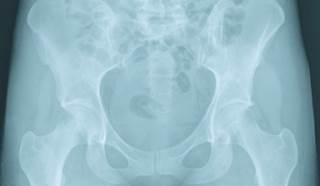"Which Options Are Best for Pelvic Congestion Syndrome?

Which Options Are Best for Pelvic Congestion Syndrome?
Pelvic congestion syndrome (PCS) is a poorly understood and often overlooked etiology of chronic pelvic pain. Millions of women worldwide may develop chronic pelvic pain at some time in their life, and the occurrence may be as high as 39.1%.1
Chronic pelvic pain can be debilitating and accounts for 10% to 15% of all gynecologic visits.1 Managing this complex condition can be a challenge for the primary-care provider. When clinical and ultrasound examinations are normal, further diagnostic imaging can helpful to obtain the diagnosis. Once identified, PCS can be treated successfully with embolization therapy.
PCS is associated with dilated pelvic varices with reduced venous clearance, most often as a result of retrograde flow in an incompetent ovarian vein. The condition is seen more often in multiparous premenopausal women. A relationship between PCS and endogenous estrogen levels is suggested, as estrogen is known to weaken the vein walls.1
The venous congestion stretches the inner surface of the ovarian vein, distorting both the endothelial and smooth-muscle cells. It is postulated that kinking of the ovarian vein leads to venous stasis, flow reversal, and subsequent varicosities.2 PCS can also be caused by external compression, such as that seen in nutcracker syndrome (compression of the left renal vein between the aorta and superior mesenteric artery) and May-Thurner syndrome (compression of the left iliac vein beneath the iliac artery).
PCS is not easy to diagnose. Women typically complain of a dull, throbbing and achy pain in the vulvar region. This pain often worsens during or after intercourse or just before the onset of menses and/or increases throughout their day. Typically, women with PCS will not be symptomatic in the morning but will become so with prolonged standing or sitting.
The typical PCS patient may or may not have vulvar varicosities but often has varicose veins with the left leg presenting greater than the right. The varicosities usually extend along the medial aspect of the medial to posterior upper thigh and along the buttocks.
Making the diagnosis more challenging is the vast array of the associated symptoms, including cyclic pain (with menstrual periods), dyspareunia, bladder irritability, GI symptoms and low back pain. Hemorrhoids and/or varicose veins of the perineum, buttocks or lower extremities may also be noted.1 Ovarian point tenderness on examination with a history of postcoital ache is said to be 94% sensitive and 77% specific for PCS.3
PCS is often diagnosed in women younger than age 45 years who have had more than one pregnancy. The ovarian veins increase in size during each pregnancy and do not return to normal in women with PCS. PCS is rarely diagnosed in nulliparous women."
Chronic pelvic pain can be debilitating and accounts for 10% to 15% of all gynecologic visits.1 Managing this complex condition can be a challenge for the primary-care provider. When clinical and ultrasound examinations are normal, further diagnostic imaging can helpful to obtain the diagnosis. Once identified, PCS can be treated successfully with embolization therapy.
Etiology
PCS is associated with dilated pelvic varices with reduced venous clearance, most often as a result of retrograde flow in an incompetent ovarian vein. The condition is seen more often in multiparous premenopausal women. A relationship between PCS and endogenous estrogen levels is suggested, as estrogen is known to weaken the vein walls.1
The venous congestion stretches the inner surface of the ovarian vein, distorting both the endothelial and smooth-muscle cells. It is postulated that kinking of the ovarian vein leads to venous stasis, flow reversal, and subsequent varicosities.2 PCS can also be caused by external compression, such as that seen in nutcracker syndrome (compression of the left renal vein between the aorta and superior mesenteric artery) and May-Thurner syndrome (compression of the left iliac vein beneath the iliac artery).
Clinical Presentation
PCS is not easy to diagnose. Women typically complain of a dull, throbbing and achy pain in the vulvar region. This pain often worsens during or after intercourse or just before the onset of menses and/or increases throughout their day. Typically, women with PCS will not be symptomatic in the morning but will become so with prolonged standing or sitting.
The typical PCS patient may or may not have vulvar varicosities but often has varicose veins with the left leg presenting greater than the right. The varicosities usually extend along the medial aspect of the medial to posterior upper thigh and along the buttocks.
Making the diagnosis more challenging is the vast array of the associated symptoms, including cyclic pain (with menstrual periods), dyspareunia, bladder irritability, GI symptoms and low back pain. Hemorrhoids and/or varicose veins of the perineum, buttocks or lower extremities may also be noted.1 Ovarian point tenderness on examination with a history of postcoital ache is said to be 94% sensitive and 77% specific for PCS.3
PCS is often diagnosed in women younger than age 45 years who have had more than one pregnancy. The ovarian veins increase in size during each pregnancy and do not return to normal in women with PCS. PCS is rarely diagnosed in nulliparous women."